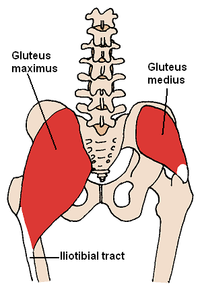
Photo from wikipedia
Surface treatment alone does not determine the final microtopography of a dental implant, which can be influenced by implant design and the surgical procedure. This study investigated the effect of… Click to show full abstract
Surface treatment alone does not determine the final microtopography of a dental implant, which can be influenced by implant design and the surgical procedure. This study investigated the effect of surgical placement of dental implants with same surface treatments on surface roughness. Three implants (SIN) of each group with different macrogeometries (Strong, Stylus, and Tryon) were analyzed using laser interferometry and scanning electron microscopy to evaluate surface topography. All threaded regions of the implants, namely, top, flank, and valley, were analyzed individually. Relevant surface parameters (Sa, Ssk, Sku, Str, and Sdq) were calculated for the different regions on each implant before (B) (n = 9) and after (A) (n = 9) placement into porcine rib bones. The behavior and proliferation of a preosteoblastic cell line MC3T3-E1 on titanium surface, cell viability, and osteopontin secretion were evaluated after 24 h, 48 h, and 96 h, also before (n = 18) and after (n = 18) implant placement into porcine ribs bone. As results, the valleys of all implants had an increase in Sa values after implant placement. By contrast, the tops of the Stylus A implant and the flanks of the Tryon A implant showed a significant decrease in mean height of the irregularities (Sa), 0.16 µm and 1.25 µm, respectively. The Stylus implant presented significantly (p < 0.05) higher asymmetry values on the distribution curve for irregularity heights (Sku) in all regions after insertion into bone (6.99 for tops, 9.54 for flanks, and 17.64 for valleys), indicating a greater preponderance of peaks over valleys. An increase in roughness gradients (Sdq) was observed for all macrogeometries after insertion into bone. The cell culture results showed no significant difference (p > 0.05) for all macrogeometries after bone placement. In conclusion, a subtle change in implant surface roughness was detected after insertion into bone for all the macrogeometries, without significantly affecting the cellular parameters studied.
Journal Title: International Journal of Dentistry
Year Published: 2018
Link to full text (if available)
Share on Social Media: Sign Up to like & get
recommendations!